In an era where personal safety has become a paramount concern, the significance of innovative security measures cannot be overstated. Among these, police panic buttons stand out as a critical tool for individuals seeking immediate assistance in emergency situations. These devices, designed to be simple yet effective, offer a direct line to emergency services, ensuring that help is just a press away.
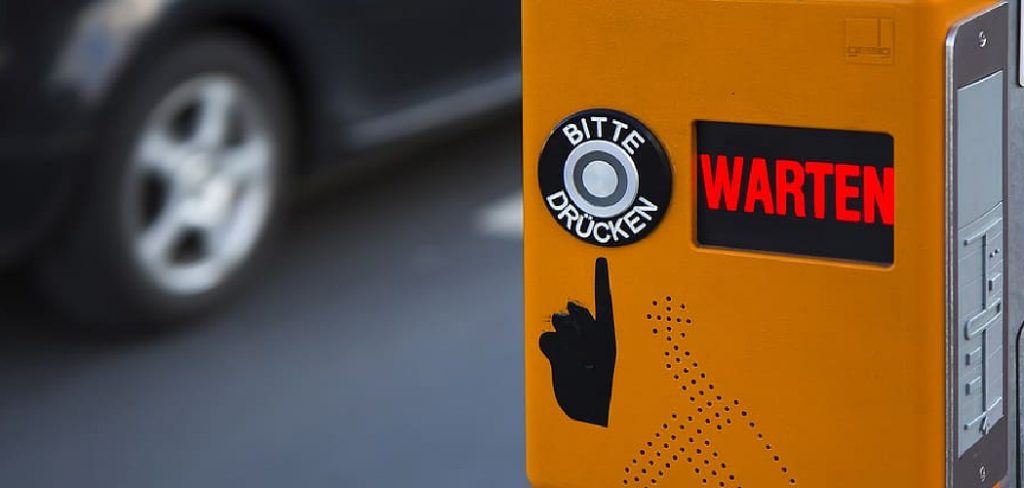
Understanding how to get a police panic button is crucial for anyone looking to enhance their personal security and the safety of their surroundings. Police panic buttons work by sending an alert to local law enforcement or selected emergency contact, indicating that the user is in distress and requires immediate help.
The benefits of such a system are manifold, including the potential to deter crime, the speed of response in critical situations, and, most importantly, the peace of mind it provides to users. This introduction aims to shed light on the importance of police panic buttons in today’s society, elucidating their functionality, benefits, and the process of how to get a police panic button for personal or workplace use.
Types of Police Panic Buttons
When considering how to get a police panic button, it’s important to understand the various types available. These devices come in multiple forms, each suited to different environments and safety needs.
A. Personal Panic Buttons
Personal panic buttons are small, portable devices designed for individual use. They can be carried on a keychain, worn as a pendant, or attached to a belt.

Perfect for those who are often alone – whether walking through a parking lot at night or working in a secluded area – these buttons provide a direct link to emergency services, ensuring help is just a press away.
B. Home Security Systems with Panic Buttons
Many modern home security systems incorporate panic buttons into their setup. These can be standalone devices placed in strategic locations around the home or integrated features in security panels and remotes.
They offer a quick way for any member of the household to alert the authorities in case of an intrusion, medical emergency, or fire, adding an extra layer of protection to your home’s safety plan.
C. Workplace Panic Buttons
Workplace panic buttons are essential for businesses concerned with employee safety, especially those in sectors with higher security risks or customer interactions. These can be installed at fixed locations, like under desks or at reception areas, or carried by employees.
They provide a discreet method for signaling distress, ensuring a rapid response to any potential threat while maintaining a safe and secure working environment.
Benefits of Having a Police Panic Button
The notion of safety transcends mere precaution; it is a fundamental right that ensures peace, stability, and well-being for individuals and families. Integrating a police panic button into one’s safety arsenal brings forth a multitude of benefits that significantly augment personal security and emergency preparedness.
A. Immediate Access to Emergency Services
In emergencies, time is of the essence. Every second counts towards preventing a bad situation from turning worse. A police panic button embodies this principle by offering immediate access to emergency services with the simple press of a button.
This direct line to assistance drastically cuts down response times, allowing police or other emergency personnel to act swiftly. Whether faced with a break-in, medical emergency, or any situation that calls for urgent help, the user can rest assured that aid is promptly on its way.
B. Enhanced Personal Security
The presence of a police panic button acts as a powerful deterrent to potential threats. Knowing that any attempt at intrusion or aggression can instantly summon police forces makes criminals think twice before acting.

For individuals, this means an added layer of security when alone, at night, or in vulnerable situations. It empowers users, giving them a means to protect themselves actively rather than solely relying on passive security measures.
C. Peace of Mind for Individuals and Families
Beyond the tangible security benefits, the psychological comfort provided by having a police panic button cannot be understated. It instills a sense of confidence and calm, knowing that one has the tools to protect themselves and their loved ones in dire situations.
For families, it reassures that all members, especially children and the elderly, have a way to call for help if needed. This peace of mind is invaluable, allowing people to live their lives more freely and with less worry about the what-ifs of safety and security.
Legal Considerations
While police panic buttons provide a valuable layer of security, users must be aware of the legal considerations surrounding their ownership and use. Legal requirements or regulations can vary significantly depending on the jurisdiction. In some areas, the use of such devices might be restricted or require registration with local law enforcement agencies to prevent false alarms and misuse.
Additionally, there may be specific guidelines about who can use these devices, where they can be installed, and how they can be used in different settings such as homes, workplaces, or in public.
To navigate these legal waters, it is crucial for individuals interested in incorporating police panic buttons into their safety plans to research and understand the local laws and regulations. This research can typically start with a visit to local government websites, which often have sections dedicated to public safety and emergency services.
Engaging with local police departments directly can also provide valuable insights into the best practices and legal requirements for using panic buttons effectively and legally.
For businesses, consulting with legal advisors or firms that specialize in security laws can help ensure that the installation and use of workplace panic buttons comply with all relevant laws and regulations, avoiding potential legal issues down the line.
Assessing Your Needs
Before investing in a police panic button, it is essential to clearly assess one’s security needs. This ensures that you choose the right device that aligns with your security concerns and budget.
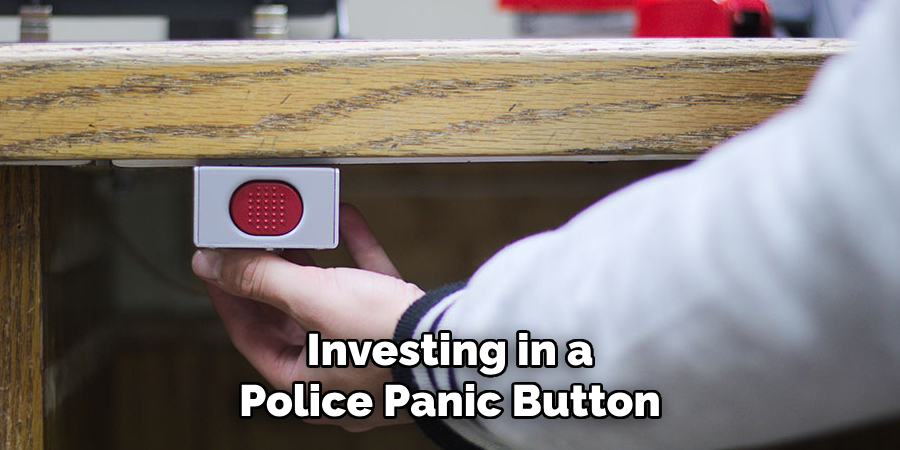
A. Identifying Your Security Concerns
Start by analyzing your daily activities, environment, and any specific threats you might face. For individuals, consider factors such as frequency of travel, late-night commutes, or any personal circumstances that may increase your vulnerability.
Businesses should assess their operational risks, employee safety concerns, and any past security incidents. This thorough understanding will guide you in choosing a panic button that best addresses those concerns.
B. Determining the Type of Panic Button Required
Based on your security assessment, decide which type of police panic button suits your needs. For personal safety, a portable device may be ideal. Homeowners might lean towards integrated security systems with panic capabilities, while businesses could benefit from fixed or wearable options for employees.
Consider the ease of use, range, and connectivity to emergency services when making this choice.
C. Evaluating Budget and Cost Considerations
Finally, consider your budget. Costs can vary widely based on the sophistication of the device and the level of integration into existing systems. For individuals, simple wearable devices may be more cost-effective, while businesses might view the investment in a comprehensive system as a necessary expense for employee safety.
Be sure to account for any recurring fees, like service subscriptions, that are associated with the device’s operation. Finding a balance between cost and functionality will be key in making a sensible decision.
Researching Providers
A. Local Police Departments
When considering the integration of a police panic button into your safety plan, your first point of contact should be your local police department. They can provide vital information regarding the compatibility of their response systems with different panic button technologies.
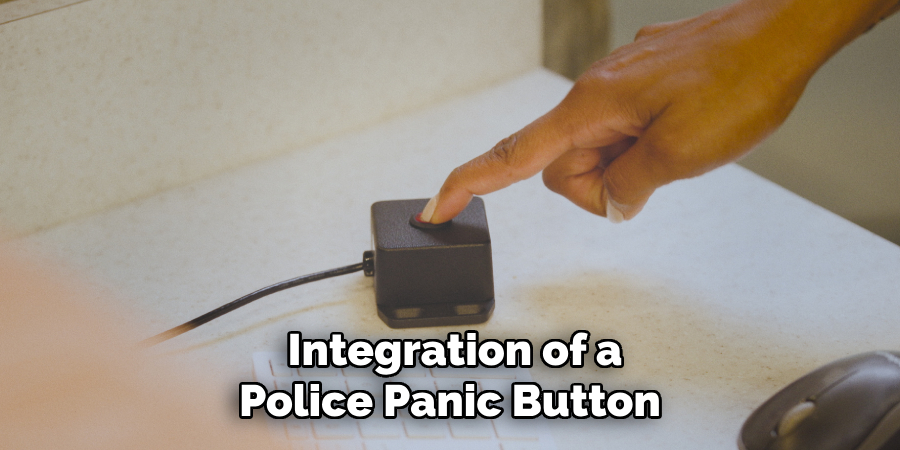
Some departments may even offer recommendations or partnerships with specific providers that align with their communication protocols. Engaging with your local law enforcement also ensures that any device you choose meets legal standards and requirements in your area.
B. Security Companies
Security companies are at the forefront of personal and commercial safety technologies, including panic buttons. Many of these companies offer a range of products, from standalone panic buttons to comprehensive security systems that integrate panic functionality.
Consulting with reputed security companies can benefit from their expertise in assessing your specific security needs, followed by tailored recommendations. These companies typically provide installation services and ongoing support, ensuring that your device is always ready when you need it most.
C. Online Retailers and Manufacturers
The digital marketplace offers a broad spectrum of police panic buttons from various manufacturers. Shopping online allows you to compare different models, features, and prices at your convenience.
Many manufacturers provide detailed product specifications, user reviews, and comparison tools to help you make an informed decision. However, when purchasing from online retailers or directly from manufacturers, it’s crucial to verify the product’s compatibility with your local emergency services and its adherence to legal regulations in your jurisdiction.
How to Get a Police Panic Button: Choosing the Right Panic Button

Selecting the right panic button involves considering various factors to ensure it meets your security needs and integrates seamlessly with your lifestyle or business operations. Below, we outline essential aspects to guide your selection process.
A. Features to Look For
When choosing a police panic button, the feature set is paramount. Look for devices with GPS tracking capabilities to allow law enforcement to quickly locate the user in an emergency. Another critical feature is two-way communication, enabling the user to speak directly with emergency responders.
Durability is also important—consider devices that are water-resistant and have a long battery life to ensure reliability when it matters most. Lastly, evaluate the responsiveness of the panic button. It should transmit alerts instantaneously to minimize the response time in critical situations.
B. Compatibility with Existing Security Systems
Compatibility is a key factor for those with existing home or business security systems. The panic button should integrate smoothly with your current setup, allowing for centralized control and monitoring.
This integration can enhance overall security by providing comprehensive coverage and streamlined response procedures. If a security company monitors your system, confirm that the panic button can communicate effectively with their monitoring centers.
C. User-Friendly Design and Installation
Ease of use is critical in emergency situations. Choose panic buttons with a user-friendly design, ensuring that they can be easily activated under stress. For personal devices, consider ergonomics and whether the device can be conveniently carried on your person. For home or business applications, assess the ease of installation. Wireless options can offer flexibility in placement and often come with DIY installation kits.

However, some scenarios might benefit from professional installation, especially when integrating with complex systems. Regardless of the choice, the setup should not be overly complicated, as this can hinder timely deployment and use.
Obtaining and Installing the Panic Button
After choosing the perfect police panic button for your needs, the next steps involve obtaining and installing the device efficiently. Here’s a concise guide to help you through this phase:

- Purchase: Once you have selected your device, purchase it from a reputable retailer or directly from the manufacturer. If purchasing online, ensure the seller is credible and that the product is covered by a warranty.
- Unboxing: Carefully unbox the device upon receipt, ensuring all components, including the panic button, any mounting hardware, and installation guides, are intact.
- Consulting the Manual: Before commencing installation, thoroughly read the device’s manual. This document contains crucial information about the setup process, optimal usage, and maintenance procedures.
- Installation: Follow the manual’s instructions for installing your panic button. For wireless systems, this often involves selecting a strategic location and securing the device in place. In contrast, wired systems may require professional installation to integrate properly into existing security systems.
- Placement: For optimal effectiveness, place panic buttons in easily accessible but discreet locations.
- Testing: After installation, test the panic button according to the manufacturer’s instructions to confirm its proper connection with emergency services or monitoring centers.
- Training: If the device is to be used by multiple individuals, ensure everyone is trained on its proper use, including how to activate it and what to expect in terms of response.
Following these steps ensures that your police panic button is properly installed and positioned for maximum effectiveness in emergency situations.
Testing and Familiarization
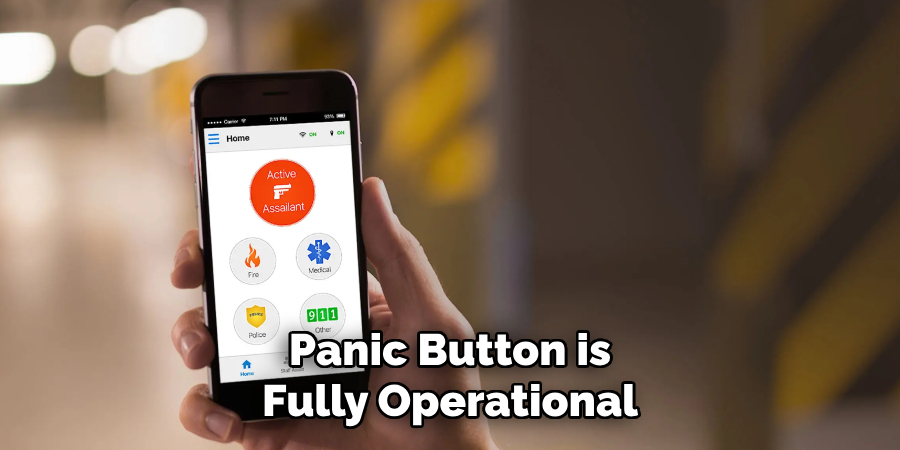
Ensuring your police panic button is fully operational and familiar to all potential users is crucial for its effectiveness during an emergency.
This section will guide you through conducting regular tests, training household members or employees, and programming emergency contacts into your device.
A. Conducting Regular Tests
Regular testing is imperative to maintaining the reliability of your panic button system. Schedule monthly tests to ensure the device communicates effectively with emergency services or monitoring centers.
This process often involves a simple push of the button, followed by verification with the monitoring service to confirm they received the alert. Keeping a log of these tests can help you track the device’s performance and identify any issues promptly.
B. Training Household Members or Employees
All individuals who may need to use the panic button should be trained on its proper operation. This training includes demonstrating how to activate the panic button, what to expect after activation, and emphasizing the importance of using it only in genuine emergencies.
Role-playing different scenarios can also be beneficial in teaching quick and correct responses.
C. Programming Emergency Contacts
Most modern panic buttons allow you to program direct emergency contacts. This feature is beneficial, ensuring that, besides alerting monitoring services, specific individuals are notified in an emergency.
Take the time to input and regularly update these contacts, ensuring they include family members, close friends, or key employees who can respond swiftly if needed. Confirm that these contacts are aware they’ve been designated as such and understand what actions to take if they receive an alert.
Maintaining the Panic Button
Maintaining your police panic button is crucial to ensuring its reliability and functionality when you need it the most. Here’s a comprehensive guide on how to keep your device in top condition:
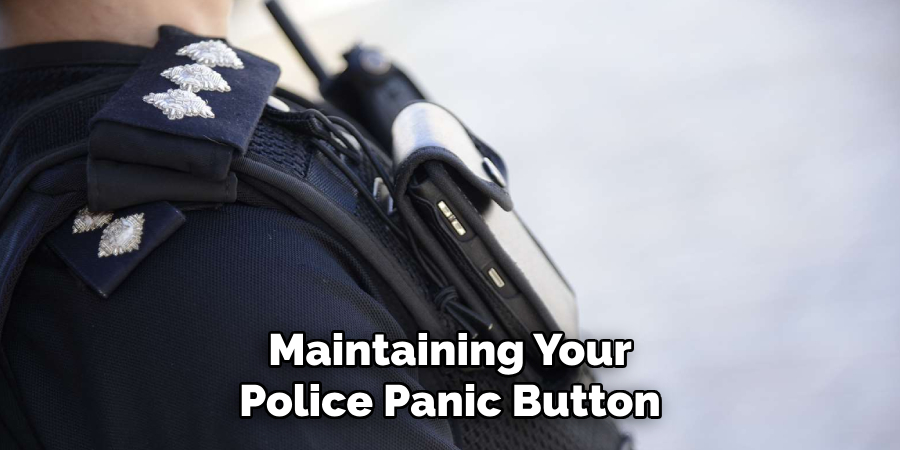
A. Regular Battery Checks and Replacements
The effectiveness of your panic button hinges on its power source. Conduct regular battery checks at least once a month to ensure the device is always charged and ready for use. Most panic buttons have a low battery indicator, either through a visual signal or an alarm.
When this is activated, replace the batteries immediately with the recommended type and brand. For rechargeable devices, ensure they are charged according to the manufacturer’s instructions. Keeping spare batteries on hand or a charging cable in an easily accessible place can also be beneficial.
B. Cleaning and Inspecting for Damage
Your panic button should be kept clean and free from dust, which can interfere with its functionality. Use a soft, dry cloth to gently wipe the surface of the device, avoiding any harsh chemicals or water that could damage it. Regular inspections for physical damage are also essential.
Check for any signs of wear and tear, especially if the device is frequently carried outside. If any damage is found that might impair its functionality, contact the manufacturer or a professional service for repair or replacement.
C. Updating System Software or Firmware
For panic buttons that incorporate software or firmware, keeping these elements up to date is crucial. Manufacturers may release updates to improve functionality, add new features, or address security vulnerabilities.
Check for updates regularly by visiting the manufacturer’s website or through the device’s interface if it has one. Follow the provided instructions to complete any updates, ensuring that your device maintains optimal performance and security standards.
Integrating with Other Security Measures
Integrating panic buttons with other security measures can significantly enhance the overall safety of an environment, whether it’s a home or a business. Panic buttons serve as a critical layer in a multifaceted security approach, acting swiftly in emergencies when there’s no time to access other forms of communication.
They perfectly complement surveillance cameras, motion detectors, and alarm systems by providing a direct and instantaneous link to emergency services or security personnel.
To create a comprehensive security plan that includes panic buttons as a key component, start by assessing the current security risks and needs. Understand the layout of the space and identify the most vulnerable points that would benefit from panic buttons’ immediate response capabilities.
Coordinate the panic button system with surveillance and alarm systems to ensure that when a button is pressed, the event is recorded, and alarms are triggered to deter threats and alert others in the vicinity.
Furthermore, the panic button system can be integrated with mobile devices and security software to receive alerts and monitor situations remotely. Lastly, ensure that all elements of the security system are interconnected, allowing for seamless communication between each component.
This integration not only maximizes the effectiveness of panic buttons but also strengthens the overall security infrastructure, creating a safer and more responsive environment.
Conclusion
In conclusion, understanding how to get a police panic button is just the beginning of enhancing your personal or organizational safety. The process involves not only acquiring the device but also maintaining its functionality through regular testing, training for users, and integrating it with broader security measures.
By following the steps outlined in this guide, you can ensure that your panic button system is reliable, effective, and ready to serve as a critical asset in your security protocol. Remember, the ultimate goal is to create an environment where safety is paramount, and the panic button is a pivotal tool in achieving this.
About
Safety Fic is a distinguished figure in the world of Diy design, with a decade of expertise creating innovative and sustainable Diy solutions. His professional focus lies in merging traditional craftsmanship with modern manufacturing techniques, fostering designs that are both practical and environmentally conscious. As the author of diy, Safety Fic delves into the art and science of Safety Fic-making, inspiring artisans and industry professionals alike.
Education RMIT University
(Melbourne, Australia) Associate Degree in Design (Safety Fic) Focus on sustainable design, industry-driven projects, and practical craftsmanship. Gained hands-on experience with traditional and digital manufacturing tools, such as CAD and CNC software.
Nottingham Trent University
(United Kingdom) Bachelor’s in diyfastly.com and Product Design (Honors) Specialized in product design with a focus on blending creativity with production techniques. Participated in industry projects, working with companies like John Lewis and Vitsoe to gain real-world insights.
Publications and Impact
In diy, Safety Fic his insights on indoor design processes, materials, and strategies for efficient production. His writing bridges the gap between artisan knowledge and modern industry needs, making it a must-read for both budding designers and seasoned professionals.
